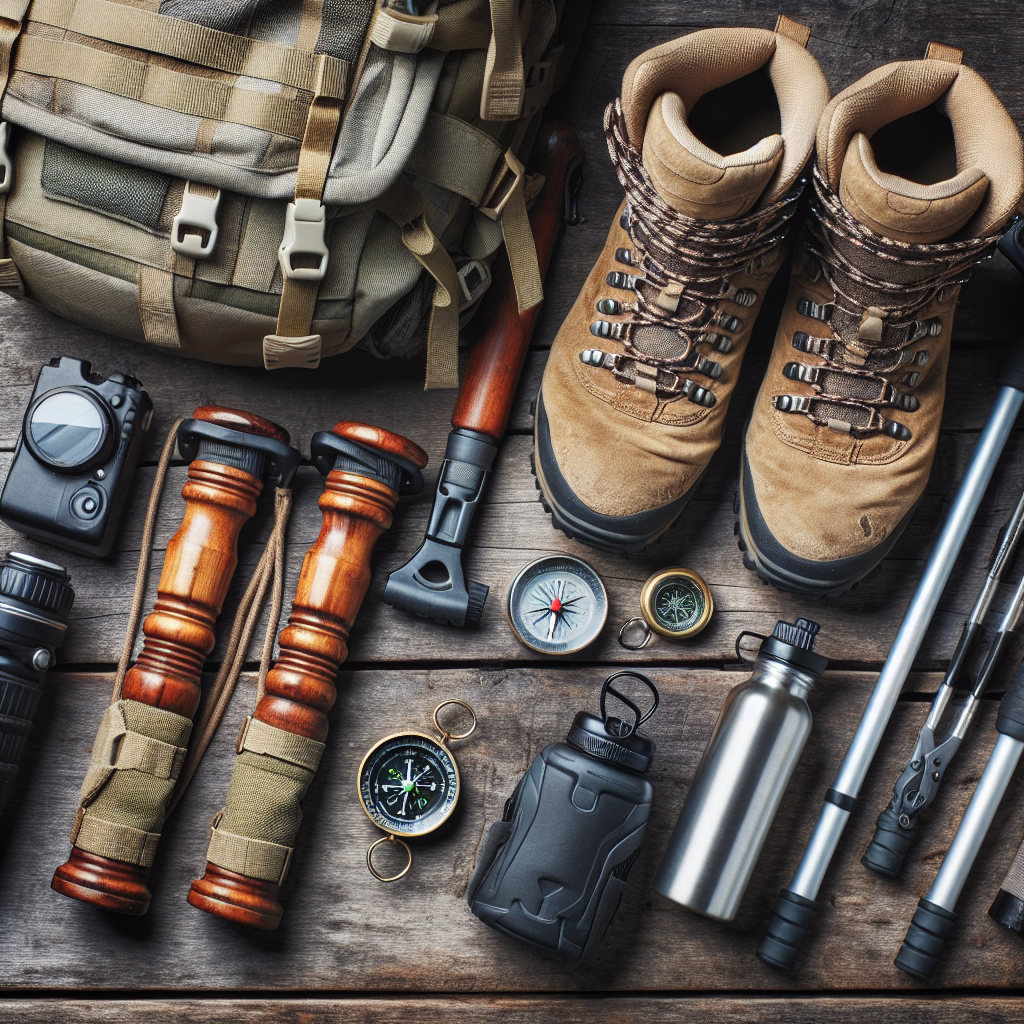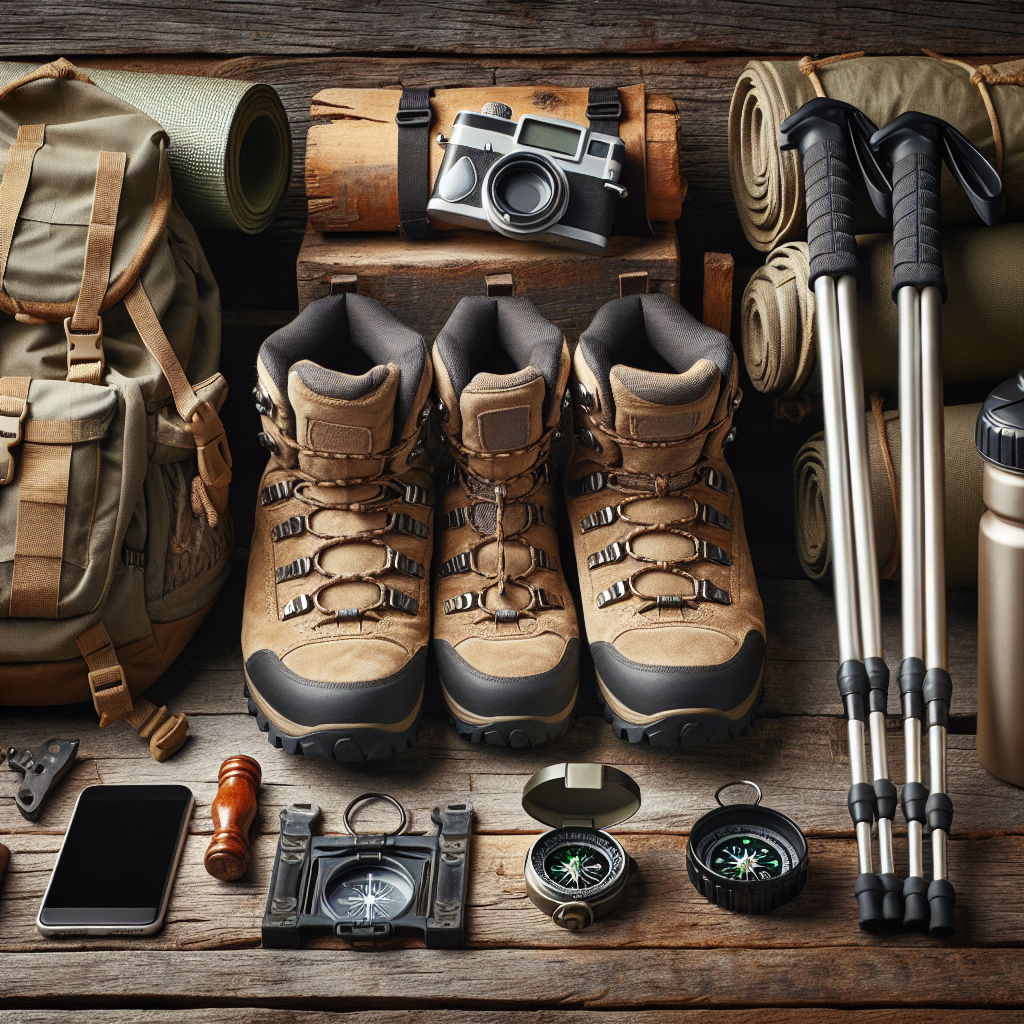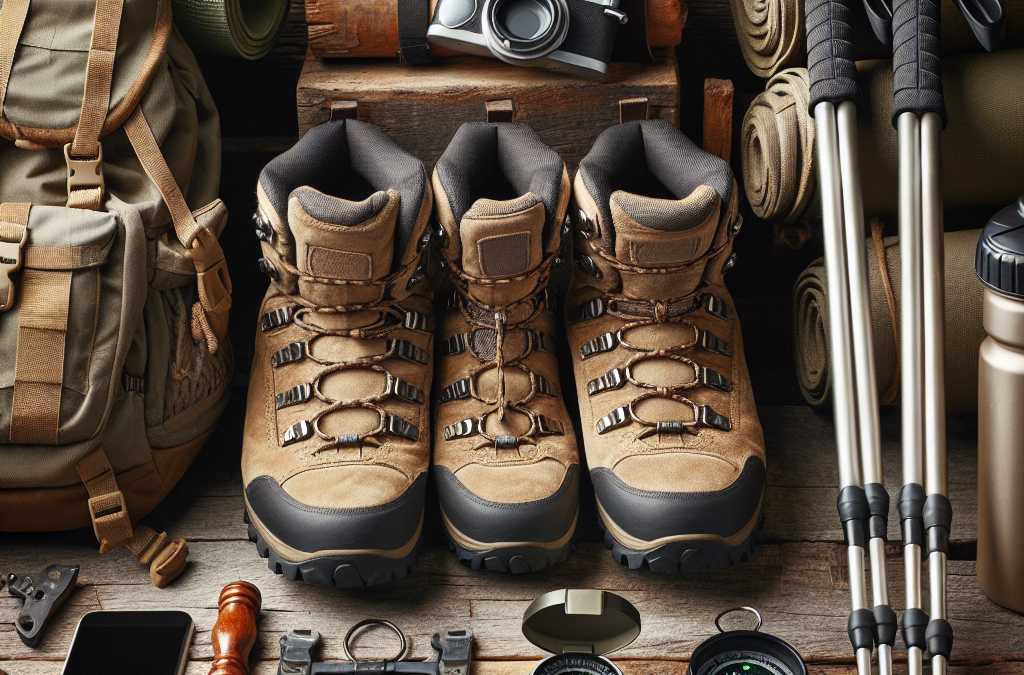Stepping into the great outdoors for a thrilling hike can be an exhilarating experience. This genuinely rewarding adventure becomes even more delightful when your hiking gear is at peak performance. This article is your friendly guide to maintaining your hiking equipment, ensuring longevity and durability. We’ll stroll you through the essential care techniques for different pieces of hiking gear, from boots and backpacks to tents and trekking poles. It’s time to ensure your gear remains dependable through every trail you tread.
Understanding the Importance of Hiking Gear Maintenance
When preparing for a hike, one of the most critical factors often undervalued or overlooked is the significance of keeping your hiking gear in the top-most condition. A trekkers experience and success do not merely rely on physical preparedness but also on the condition of their equipment.
Importance of properly maintained equipment
Maintaining your hiking gear is not just about polishing the exterior for an Instagram-perfect snapshot; it goes deeper into ensuring your equipment operates optimally. When you’re out in nature walking on uneven terrains, you need your gear to be in the best shape, be it your compass, boots, backpack, or tent.
Impact on your safety and performance
Your safety and performance on the trail are directly proportional to how well-maintained your equipment is. For instance, boots that haven’t been cared for adequately can cause discomfort while walking, impacting your pace and potentially causing injuries. On the other hand, a well-maintained tent can offer protection from harsh weather conditions.
Financial aspect: protecting your investment
Hiking gear is an investment and to make the most of it, maintaining the equipment is key. Rather than having to frequently replace items due to poor maintenance, a little care and attention can extend the life of your gear, let you enjoy many years of use and save your hard-earned money.
Basic Principles of Gear Maintenance
Different gear requires different kinds of care. However, there are some fundamental principles that apply to most of your hiking equipment.
Pre-hike gear check
Before embarking on your hike, it’s critical to thoroughly check all your equipment. This includes examining your boots for any wear, checking the functionality of your compass and GPS, and ensuring there are no tears in your backpack or clothes.
Cleaning after each hiking trip
Post-hike cleaning is a key aspect of gear maintenance. Cleaning your gear promptly after a hike can help remove dirt and prevent long-term damage. It’s especially important to clean items like boots and cookware that may have been exposed to mud or food residue.
Regular checks for damages
Even while not in use, your gear can incur damage. Regular checks help in recognizing and addressing concerns early. Be it cracks on your boots, rust on utensils or a malfunctioning compass, identifying issues timely can prevent larger issues later on.
Proper storage
Storing your gear correctly when not in use aids in prolonging its lifespan. As a rule, keep your gear in a cool, dry place. Avoid stacking heavy items on top of your gear to prevent deformation.

Maintenance of Hiking Boots
Arguably, one of the most crucial pieces of hiking gear, your boots, need special attention. They undergo a significant deal of wear and tear and provide essential support and comfort on the trail.
Cleaning hiking boots
Remove any dirt or mud from your boots post-hike using a soft brush. For stubborn stains, mildly soaped water and a soft cloth can be used. Make sure all residues of soap are removed after cleaning.
Proper drying techniques
Wet boots can lead to unpleasant odors and accelerated wear. However, avoid drying boots near direct heat or a fireside, which can cause the material to crack. Instead, stuff newspapers inside the boots, and change them frequently to speed up the process.
Waterproofing
Applying a waterproofing agent can help protect your boots from water damage. However, the use of waterproofing treatments will depend on what material the boots are made of.
Store in a dry and cool environment
Store your boots in a cool and dry place, preferably in a shoe bag or box to safeguard them from dust and damage.
Backpack Maintenance
Carrying your essentials comfortably, the backpack is a critical part of your hike. Ensuring its robustness and durability is essential.
Cleaning your backpack
Empty your backpack completely and clean it with mild soap and lukewarm water. Avoid machine washing. Always air-dry your backpack; never dry it in a dryer or direct sunlight.
Fixing broken zippers and tears
Use a repair tape or adhesive to fix minor tears. Broken zippers can be fixed with a zipper repair kit. However, for serious damages, seek professional help.
General backpack care tips
Don’t overload your backpack as it can cause the seams to tear. Lubricate the zippers regularly using silicone lubricant.

Hiking Clothing Maintenance
The proper maintenance of your hiking clothes will significantly affect your overall hiking experience.
Washing techniques for hiking clothes
Hand wash your hiking clothes whenever possible. If machine-washing, use a gentle cycle and cold water. Avoid bleach and fabric softeners as they can deteriorate the fabric’s quality.
Proper storage of hiking clothes
Store your clothes flat or rolled up instead of hanging, to maintain their shape. Materials like down should be stored in large bags that allow them to loft.
Fabric care for different materials
Different materials require different care. For instance, cotton needs to be washed in warm water while synthetic fabrics can be washed in cold water. Always check the care label on your clothes for specific instructions.
Repairing holes and tears
You can use a needle and thread for small repairs. If the tear is significant or in a high-stress area, using adhesive patches and repair tapes is a good option.
Hiking Tent Care
Taking care of your tent ensures that you have a safe and dry place to rest after a long day on the trail.
Cleaning your tent
Always clean your tent when it’s dry. Use mild soap to clean stains, rinse thoroughly and air-dry it before storing.
Patch-up techniques for holes
Use a patch and adhesive to repair holes and cuts. Apply pressure to the patch for a few minutes to make sure it sticks well.
Correct folding and storage
Incorrect folding can cause the tent’s waterproof coating to crack. Alternating the folding lines each time you pack it away will help prevent this. Store in a dry, cool place away from sharp objects.
Weatherproofing your tent
Ensure to waterproof your tent regularly. Use a waterproofing spray, focusing on the seams.
Cookware and Utensil Maintenance
Keeping your cookware and utensils clean and in good condition is crucial for hygienic food practices.
Cleaning cookware and utensils
Clean cookware with warm water and soap. For difficult to remove stains or cooked-on food, soak in hot water for a few hours before scrubbing.
Checking for corrosion and rust
Regularly check your metal cookware and utensils for signs of rust or corrosion. This can be removed with a scrubby pad or fine steel wool.
Suitable storage options
Store your cookware and utensils in a case or bag. Do not nest cookware if it has a non-stick surface, as this may scratch the surface.
Sleeping Bag Maintenance
Keeping your sleeping bag clean and in top condition ensures you have a comfortable and warm night’s sleep.
Cleaning your sleeping bag
Generally, sleeping bags should be spot-cleaned. If the whole bag needs cleaning, follow the manufacturer’s instructions carefully.
The importance of airing out
After each hike, ensure to air out your sleeping bag before packing it away. Moisture trapped in a sleeping bag can lead to mildew and deterioration of insulation.
Repairing tears and holes
For small tears, a patch kit will suffice. For larger tears, consider seeking professional help or replace the sleeping bag if needed.
Proper storage methods
Store your sleeping bag loosely in a cotton or mesh storage sack rather than the tight stuff sack used for hiking.
Maintenance of Navigation Tools
Navigation tools such as compasses and GPS devices are essential when hiking. Keeping these items in top condition is crucial for a successful and safe outdoor adventure.
Cleaning and care for compass
Wipe your compass with a soft, damp cloth. Do not use cleaning solutions or detergents, which could damage the housing of the compass.
Maintenance of GPS devices
Clean your GPS devices with a mild solution of soap and water. Dry thoroughly before storing. Keep software and maps up-to-date for optimal performance.
Best practices for map care
Physical maps should be stored in a waterproof case. Fold the map carefully along its original creases to prevent tears.
Conclusion: Creating a Regular Gear Maintenance Schedule
Incorporating a regular gear maintenance schedule into your hiking routine ensures your equipment remains in top condition for your subsequent hike.
Breaking down the gear maintenance tasks
Divide your gear maintenance tasks into “pre-hike”, “post-hike”, and “periodic”. Pre-hike tasks include checking your gear for any damages. Post-hike tasks include cleaning your gear, and periodic tasks might include waterproofing or lubrication.
Setting a schedule for gear maintenance
Based on the frequency of your hikes, set a gear maintenance schedule. You could opt for a bi-weekly or monthly cleaning routine, depending on your usage.
Adhering to your gear maintenance schedule
Try to stick to the schedule you have set for maintaining your hiking gear. Consistency plays a key role in ensuring the durability of your hiking equipment.
In conclusion, maintaining hiking gear requires patience and a bit of time but remember that it’s an investment in your safety, comfort, and wellbeing on the trail. Regular upkeep and proper care will prolong the life of your gear, saving you money in the long run while also providing you an enjoyable and hassle-free hiking experience.

